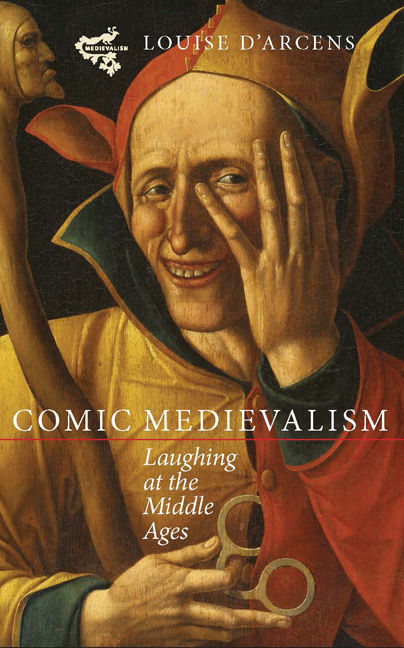Book contents
- Frontmatter
- Dedication
- Contents
- Illustrations
- Acknowledgements
- I THE SET UP
- II OLDIES BUT GOODIES: COMIC RECOVERY
- III HIT AND MYTH: PERFORMING AND PARODYING MEDIEVALISM
- 4 Pre-Modern Camp and Faerie Legshows: Travestying the Middle Ages on the Nineteenth-Century Stage
- 5 Up the Middle Ages: Performing Tradition in Comic Medievalist Cinema
- IV THAT'S EDUTAINMENT: COMEDY AND HISTORY
- Afterword: Laughing into the Future
- Bibliography
- Index
4 - Pre-Modern Camp and Faerie Legshows: Travestying the Middle Ages on the Nineteenth-Century Stage
from III - HIT AND MYTH: PERFORMING AND PARODYING MEDIEVALISM
Published online by Cambridge University Press: 05 November 2014
- Frontmatter
- Dedication
- Contents
- Illustrations
- Acknowledgements
- I THE SET UP
- II OLDIES BUT GOODIES: COMIC RECOVERY
- III HIT AND MYTH: PERFORMING AND PARODYING MEDIEVALISM
- 4 Pre-Modern Camp and Faerie Legshows: Travestying the Middle Ages on the Nineteenth-Century Stage
- 5 Up the Middle Ages: Performing Tradition in Comic Medievalist Cinema
- IV THAT'S EDUTAINMENT: COMEDY AND HISTORY
- Afterword: Laughing into the Future
- Bibliography
- Index
Summary
Perusing the front matter of the libretto to Whittington, Junior, and his Sensation Cat, an ‘Original Civic Burlesque’ which premiered at London's New Royalty Theatre on 23 November 1870, one is struck by an intriguing contradiction. First, in a blithely ahistorical gesture, the author Robert Reece waves away the necessity for ‘of-the-Period’ characterisations, asserting, tongue in cheek, that the demands of ‘Burlesque [are] superior to the dull realities of History’. Decidedly less arch, however, are his protestations that the production's costumes are ‘historical’, the appearance of its auxiliary players ‘copied from contemporaneous prints’, and its music 'selected … from rare MSS. of the time of Richard the Second and Ye Lute Players’ Manual. N.B. – No Music later than the Fourteenth Century has been admitted.’ Even before venturing into the script itself, with its fusion of folklore and pantomime, and its dialogue that mixes topical references with truly excruciating Shakespearian allusion (contemplating Whittington's cat, for instance, one character asks ‘Tabby or not tabby – that is the question’), it is clear from the outset that for all its populist simplicity, this play is engaged in a complex self-authorisation that balances comic licence against an appeal to an almost scholarly historical authenticity.
In this respect Reece's play is completely typical of its genre, and indeed of the rich comic performance culture of the nineteenth century in which theatrical representations of the Middle Ages featured prominently.
- Type
- Chapter
- Information
- Comic MedievalismLaughing at the Middle Ages, pp. 91 - 111Publisher: Boydell & BrewerPrint publication year: 2014



